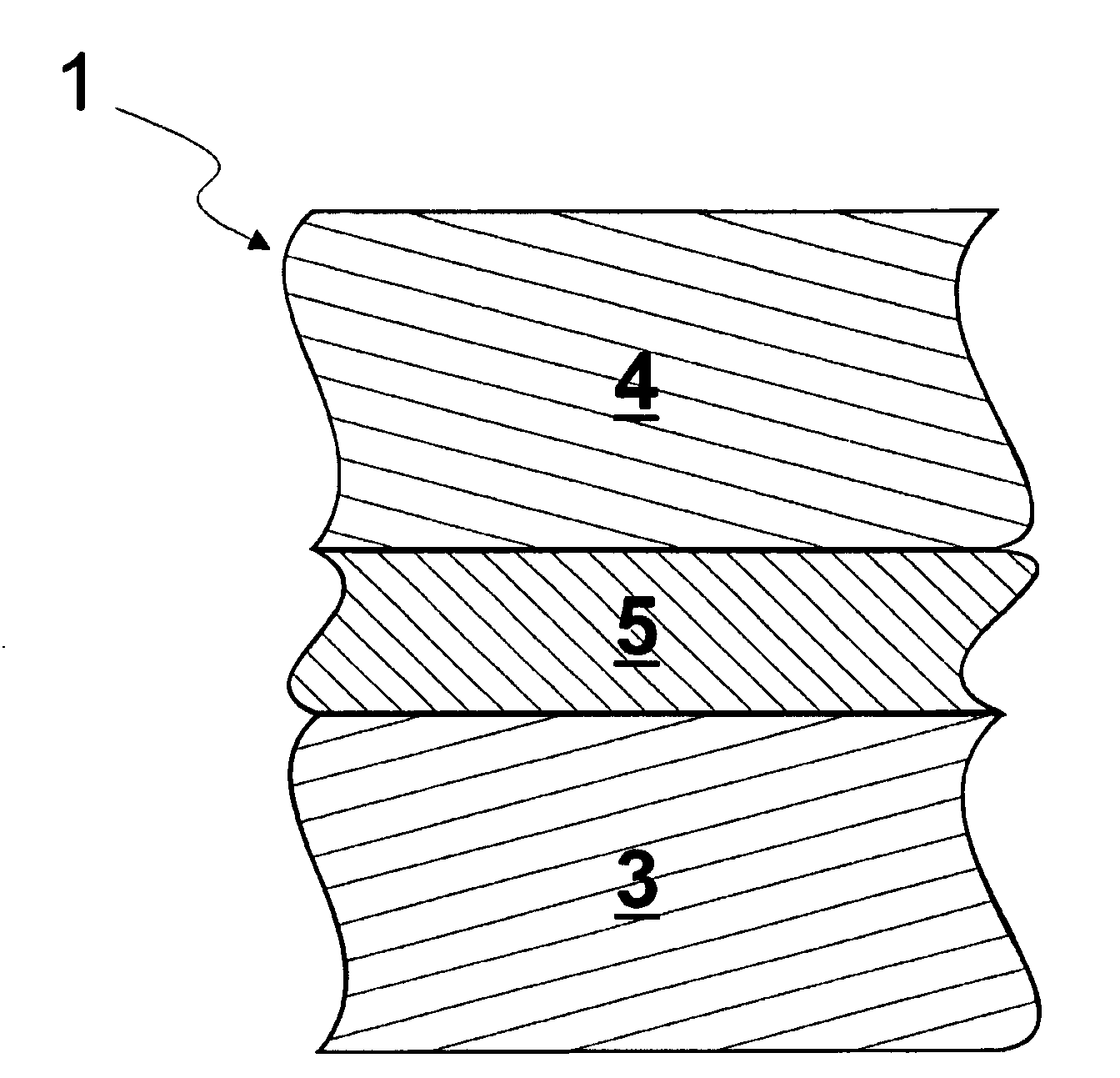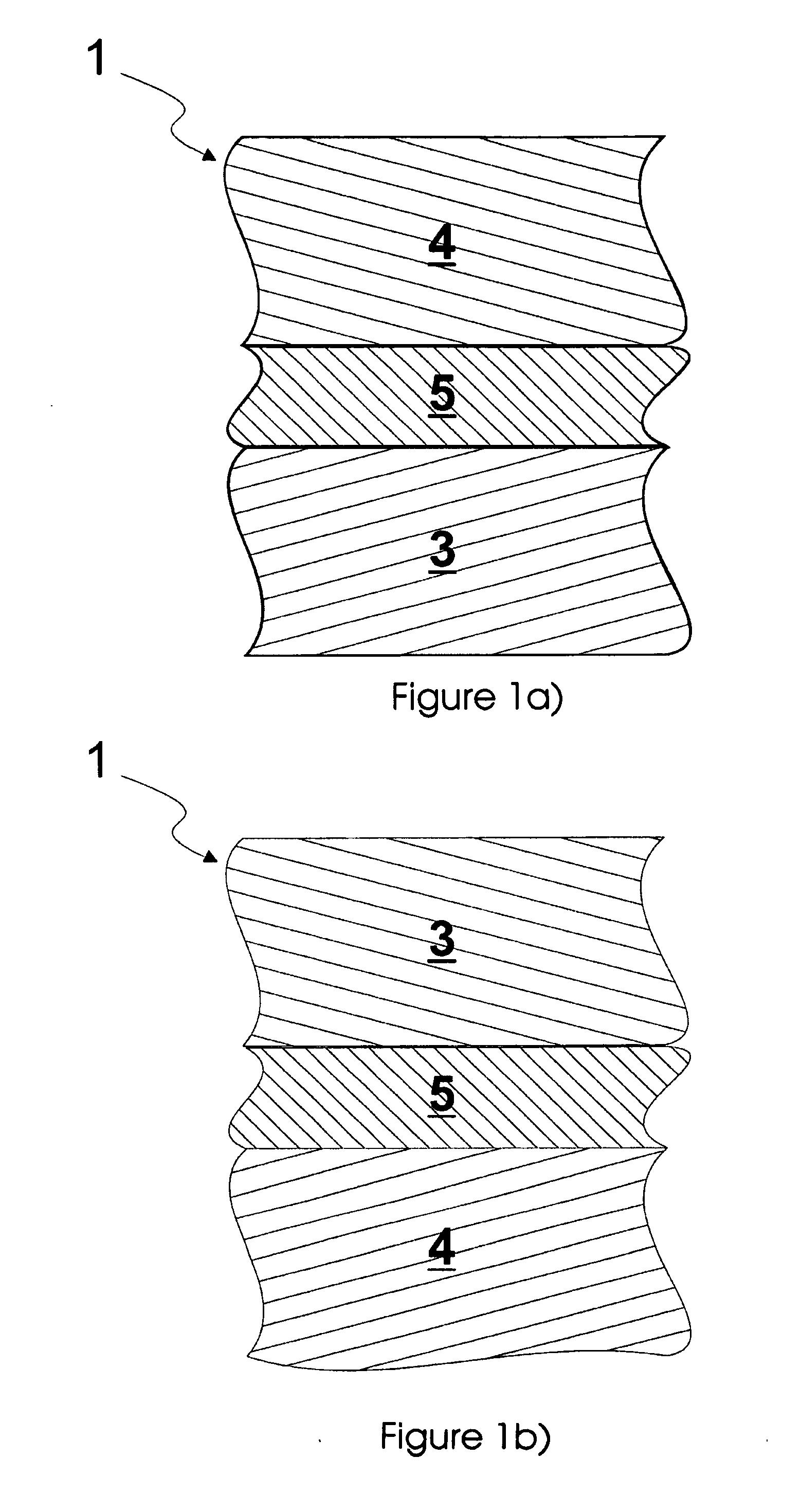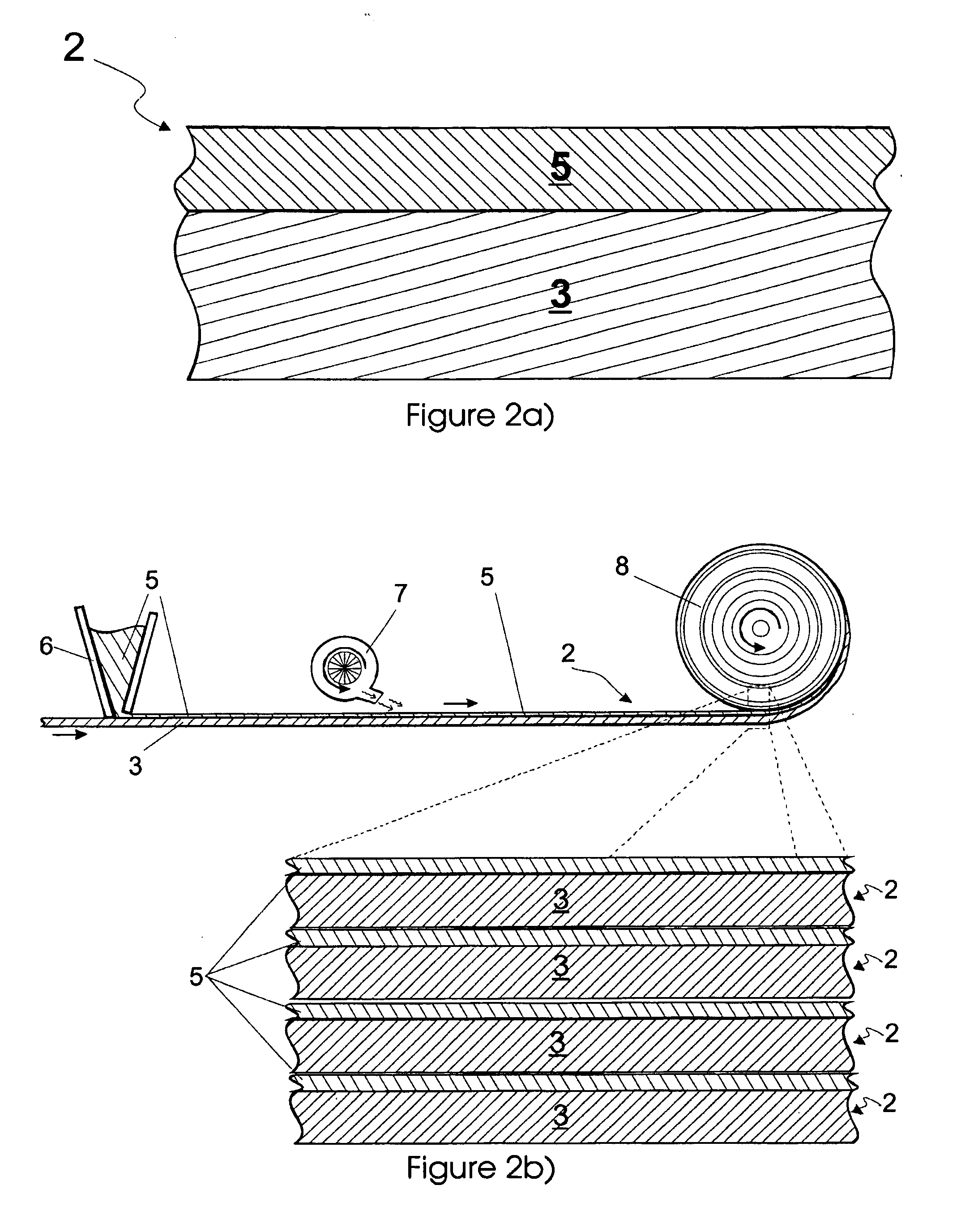Laminates joined by polyurethane hot-melt adhesive and process for bonding plasticizer-containing plastics
a technology of hot-melt adhesive and laminate, which is applied in the field of laminates, can solve the problems of reducing the mechanical properties of the adhesive caused by hot/humid or alternating storage, and achieve the effect of reducing the disadvantages of plasticizer-containing plastic bonding, reducing the disadvantages, and gradual loss of adhesion
- Summary
- Abstract
- Description
- Claims
- Application Information
AI Technical Summary
Benefits of technology
Problems solved by technology
Method used
Image
Examples
examples
[0253]Preparation of aldimines
[0254]Aldimine A-1
[0255]A round-bottomed flask was charged under a nitrogen atmosphere with 74.3 g (0.26 mol) of distilled 2,2-dimethyl-3-lauroyloxypropanal. With vigorous stirring, from a dropping funnel, 30.0 g (0.25 mol N) of polyetherdiamine (polyoxypropylenediamine having an average molecular weight of about 240 g / mol; Jeffamine® D-230, Huntsman; amine content 8.29 mmol N / g) were added slowly, in the course of which the mixture underwent heating and increasing clouding. Thereafter the volatile constituents were removed under vacuum (10 mbar, 80° C.). Yield: 99.5 g of a clear, pale yellow oil having an amine content of 2.50 mmol N / g.
[0256]Aldimine A-2
[0257]A round-bottomed flask was charged under a nitrogen atmosphere with 28.06 g (0.099 mol) of distilled 2,2-dimethyl-3-lauroyloxypropanal. With vigorous stirring, from a dropping funnel, 10.00 g (0.095 mol) of 2-(2-aminoethoxy)ethanol (Diglycolamine® Agent; Huntsman) were added over the course of 3 m...
PUM
| Property | Measurement | Unit |
|---|---|---|
| Temperature | aaaaa | aaaaa |
| Melting point | aaaaa | aaaaa |
Abstract
Description
Claims
Application Information
 Login to View More
Login to View More - R&D
- Intellectual Property
- Life Sciences
- Materials
- Tech Scout
- Unparalleled Data Quality
- Higher Quality Content
- 60% Fewer Hallucinations
Browse by: Latest US Patents, China's latest patents, Technical Efficacy Thesaurus, Application Domain, Technology Topic, Popular Technical Reports.
© 2025 PatSnap. All rights reserved.Legal|Privacy policy|Modern Slavery Act Transparency Statement|Sitemap|About US| Contact US: help@patsnap.com



